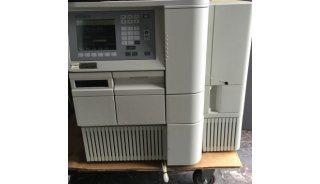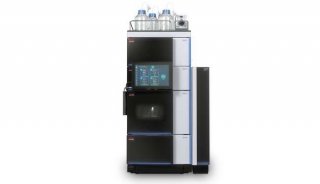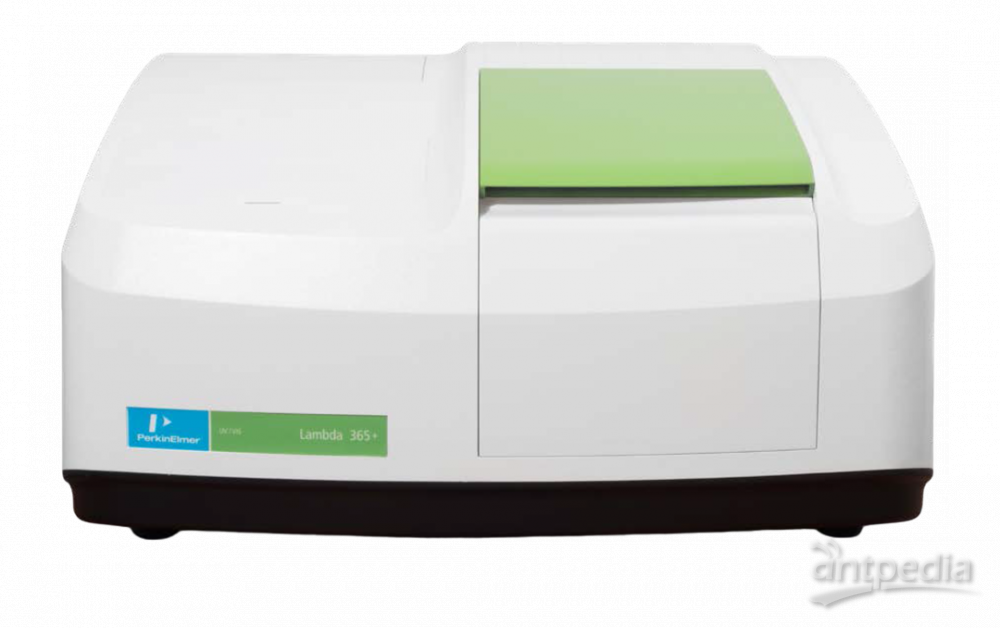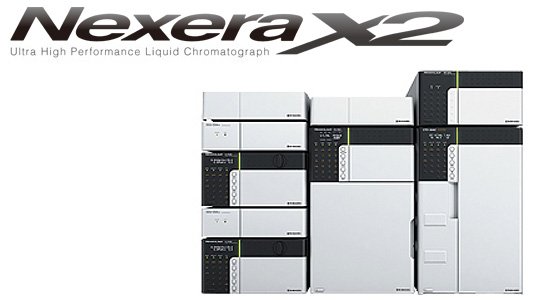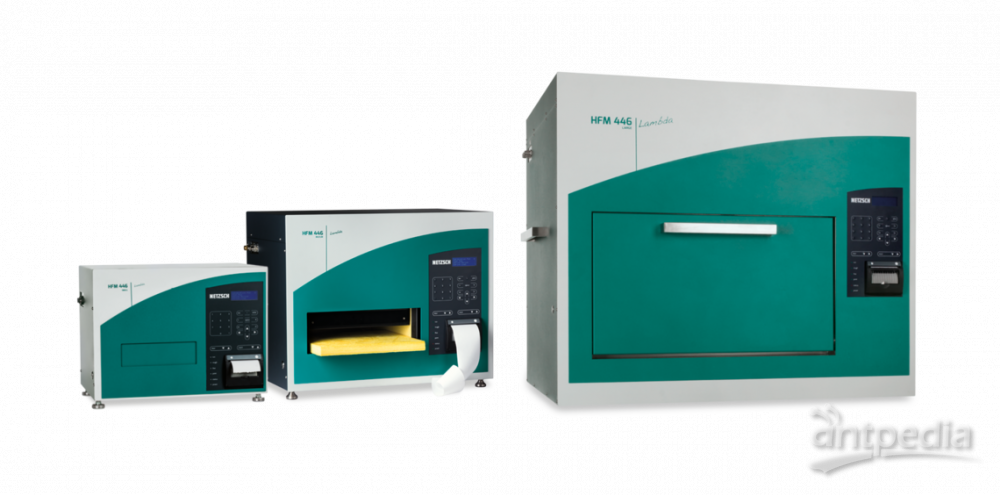Column Method for Lambda Phage DNA Preparation
Purpose:
Mini-prep method for lambda phage DNA purification from lysates.
Time required:
4 hours once the lysate is in hand
Special supplies required:
BioRad Econo Columns (Cat.# 731-1550)
Whatman DE-52 (Fisher Cat.#05-720-5)
Procedure:
Days 1 and 2:
Follow the liquid or plate lysate protocol to prepare a lysate. Dilute the lysate by the appropriate amount as stated in the lysate procedure.
Day 3
Spin the tubes at 2500 rpm for 30 minutes at room temperature in the Beckman J-6 centrifuge to pellet any cell debris.
Prepare the DEAE-cellulose columns as follows:
Warm up the DE-52 slurry to room temperature.
Place the Biorad Econocolumns in the 2-row column rack and pour approximately 4 ml of the DE-52 slurry into the column.
Let the excess buffer flow through. The height of the packed column should be 1.8 to 2 ml (about the halfway point of the angled portion of the column).
Pour the diluted lysate into the column bed.
When the column flow has stopped add 5 ml of Chase buffer {10 mM Tris, pH8.0, 10 mM Mg(OAc)2, 50 mM NaOAc} and let it flow through the column.
Add 1.0 ml of Elution buffer {10 mM Tris, pH8.0, 50 mM Mg(OAc)2} and let it flow through the column. (Note: the Mg(OAc)2 concentration can be increased to 75 mM in the Elution buffer if final DNA yields are consistently low).
Add 0.6 ml of Elution buffer and collect the flow-through in sterile eppendorf tubes placed in a Sarstedt rack. Transfer a 10 ul aliquot into another eppendorf tube and store it at 4 degrees C (to be used later in a gel assay if yields are low).
After collecting the phage fraction from the column lyse any remaining phage by washing the column with 10 ml 1N NaOH. Flush the DE52 out (down the sink) rinse in dH2O and autoclave the columns for re-use.
Phage Lysis and DNA Concentration:
Add 10 ul of 0.1 mg/ml proteinase K (stock solution is 20 mg/ml stored at -20 degrees C) and 25 ul of 10% SDS to the phage fraction from the column. Mix and let it sit at room temperature for 5 minutes.
Add 100ul of 3M KOAc (forms a white cloudy precipitate). Mix and heat at 65 degrees to 88 degrees C (in a waterbath) for 25 minutes. The precipitate will dissolve.
Cool the tubes in an ice-water slurry for at least 20 minutes. The precipitate will reform. Spin the tubes in an microcentrifuge in the cold room at 12000 rpm for 10 minutes.
Transfer the supernatant to a sterile tube containing 20 ul of 1 mg/ml mussel glycogen (the concentrated stock is 10 mg/ml). Mussel glycogen is a DNA carrier (a carrier is necessary when expecting small DNA yields i.e. less than 3 ug; in the concentrations used here will not inhibit enzyme activity and is not visible on EtBr stained gels.
Add 1 volume (approximately 700 ul) cold isopropanol and mix well. Cool the tubes to -20 degrees C for 1 hour or more.
Spin the tubes in the microfuge in the cold at 12000 rpm for 30 minutes. Discard the supernatant. Add 1ml of 95% cold Ethanol to the pellet and spin at 12000 rpm 5 minutes in the cold room. Discard supernatent (carefully draw off the ethanol with a pipetman).
Air-dry the DNA pellet with the lid of the tube open at room temperature for about 10 minutes. Lambda DNA is hard to resuspend if it is too dry.
Resuspend the DNA pellet in 20 ul of TE (pH8.0). Gently resuspend with finger-vortexing (to prevent shearing of the DNA DO NOT VORTEX). Place the tube in a 50 degrees C waterbath for 15 minutes to aid resuspension.
Run the DNA on a minigel along with known phage DNA concentration standards to check for purity and concentration.
Solutions:
DNAseI
Prepare a 1mg/ml DNAseI stock solution in sterile 150 mM NaCl 50% glycerol and store at -20 degrees C.
3M KOAc
Dissolve 29.4 g of potassium acetate in 100 ml of dH2O autoclave and store at room temperature.
Proteinase K (20 mg/ml stock)
Dissolve 20 mg of proteinase K in 1ml of sterile dH2O and store at -20 degrees C. Before use make a 1:200 dilution in dH2O to give a 0.1 mg/ml dilution.
Mussel glycogen (10 mg/ml stock)
Dissolve 10 mg of mussel glycogen (Sigma #61508 Type VII) in 1ml of dH2O filter sterilize and store at 4 degrees C. Before use make a 1:10 dilution in sterile dH2O to give a 1 mg/ml dilution and store at 4 degrees C.
DEAE-cellulose
DE52 (Whatman preswollen) is prepared in the hydrogenated form as follows: In a 2L flask suspend 500 g of DE52 in 1.5L of 0.1N HCl. Once the DE52 has settled decant the check the pH. If the pH > 2.0 repeat the above step with fresh 0.1N HCl. If the pH <= 2.0 rinse DE52 with 0.1M Tris-HCl pH8.0 until the pH of the decanted supernatent is > 7.0. Follow this with one rinse of dH2O and 3 rinses of 10mM Tris-HCl, pH8. Store DE52 at 4 degrees C as 1:1 slurry in 10 mM Tris-HCl pH8. Before use mix the slurry well and bring to room temperature.
References:
Helms C. Graham M.Y. Dutchik J.E. and M.V. Olson. (1985). "A new method for purifying lambda DNA from phage lysates". DNA 4: 39-49.
Helms C. Dutchik J.E. and M.V. Olson. (1987). "A lambda DNA protocol based on purification of phage on DEAE cellulose". In: Meth. Enzymol. 153: 69-82. Eds.: R. Wu L. Grossman. Academic Press.







